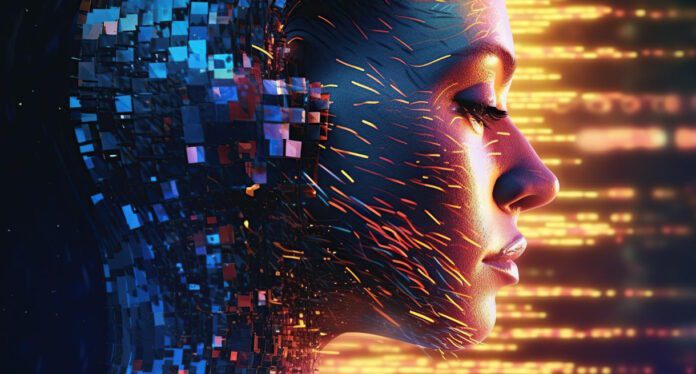Generative AI is a groundbreaking field within artificial intelligence that focuses on creating new content, ideas, or solutions rather than simply analyzing or processing existing data. This capability represents a significant leap in the evolution of AI, opening up new possibilities for innovation across various industries. In this comprehensive guide, we will explore what generative AI is, how it works, its applications, and the ethical considerations it raises. By the end of this article, you will have a deep understanding of generative AI and its potential impact on the future.
Understanding Generative AI
What is Generative AI?
Generative AI refers to systems and models that can generate new data that is similar to the input data they were trained on. Unlike traditional AI models that are designed to recognize patterns and make predictions, generative AI models create new content. These models can generate text, images, music, and even complex data structures, making them incredibly versatile.
How Does Generative AI Work?
Generative AI relies on advanced machine learning techniques, particularly neural networks, to learn from large datasets and generate new content. The most common architectures used in generative AI are Generative Adversarial Networks (GANs) and Variational Autoencoders (VAEs).
Generative Adversarial Networks (GANs): GANs consist of two neural networks, a generator and a discriminator, that work together in a feedback loop. The generator creates new data, while the discriminator evaluates how close the generated data is to the real data. Over time, the generator improves its ability to create realistic data.
Variational Autoencoders (VAEs): VAEs are designed to encode input data into a latent space and then decode it back into the original data. During this process, VAEs learn to generate new data points by sampling from the latent space. This technique allows VAEs to create new, realistic data that shares the same characteristics as the input data.
Applications of Generative AI
Generative AI has a wide range of applications across various industries, revolutionizing how we create and interact with digital content.
1. Content Creation
One of the most prominent applications of generative AI is in content creation. AI-generated text, images, and videos are becoming increasingly common, providing new opportunities for creativity and efficiency.
Text Generation: Models like OpenAI’s GPT-4 can generate coherent and contextually relevant text based on a given prompt. This capability is being used to write articles, create marketing copy, and even draft emails. Learn more about GPT-4.
Image Generation: Tools like DeepArt and DALL-E can create stunning visual art and images based on simple text descriptions or existing images. This technology is revolutionizing graphic design, advertising, and entertainment.
Video Generation: Generative AI can also create realistic videos, allowing for applications in film production, virtual reality, and gaming. These AI-generated videos can save time and reduce costs in the production process.
2. Healthcare
Generative AI is making significant strides in healthcare, offering new ways to diagnose diseases, develop treatments, and personalize medicine.
Drug Discovery: AI models can generate new molecular structures that have the potential to become new drugs. This accelerates the drug discovery process and reduces costs. Learn more about AI in drug discovery.
Medical Imaging: Generative AI can enhance medical images, making it easier for doctors to diagnose conditions. For instance, AI can generate high-resolution images from low-quality scans, improving the accuracy of diagnoses.
Personalized Medicine: By analyzing patient data, generative AI can create personalized treatment plans that are tailored to an individual’s genetic makeup and medical history.

3. Entertainment and Media
The entertainment and media industries are leveraging generative AI to create immersive experiences and innovative content.
Music Composition: AI models like OpenAI’s MuseNet can compose original music in various styles and genres. This technology is being used by musicians and producers to create new compositions and enhance existing works.
Film and Animation: Generative AI can create realistic animations and special effects, reducing the time and cost involved in film production. AI-generated characters and scenes are becoming more common in movies and TV shows.
Gaming: In the gaming industry, generative AI is used to create dynamic and responsive game environments, characters, and storylines. This technology enhances the gaming experience by making it more interactive and personalized.
4. Finance
Generative AI is transforming the finance sector by improving risk management, fraud detection, and customer service.
Risk Management: AI models can generate scenarios to predict and mitigate financial risks. These models help financial institutions make informed decisions and develop strategies to minimize losses.
Fraud Detection: Generative AI can identify patterns of fraudulent behavior by generating synthetic data that mimics real transactions. This helps financial institutions detect and prevent fraud more effectively.
Customer Service: AI-powered chatbots and virtual assistants can generate personalized responses to customer inquiries, improving the overall customer experience.
Ethical Considerations and Challenges
While generative AI offers numerous benefits, it also raises several ethical considerations and challenges that need to be addressed.
1. Data Privacy
Generative AI models require large amounts of data to train effectively. This raises concerns about data privacy and the potential misuse of personal information. Ensuring that data is collected and used ethically is crucial to maintaining public trust.
2. Bias and Fairness
AI models can inadvertently learn and perpetuate biases present in the training data. This can lead to biased outcomes in applications like hiring, lending, and law enforcement. Addressing bias in AI models is essential to ensure fairness and equity.
3. Misuse of Technology
Generative AI can be used to create deepfakes and other deceptive content, posing risks to security and public trust. Developing regulations and safeguards to prevent the misuse of generative AI is critical.
4. Intellectual Property
AI-generated content raises questions about intellectual property rights. Determining ownership and attribution for AI-generated works is an ongoing challenge that requires legal and regulatory frameworks.

The Future of Generative AI
The future of generative AI is promising, with continued advancements expected to drive further innovation and transformation across industries.
1. Improved Model Efficiency
As AI models become more efficient, they will require less computational power and data to generate high-quality content. This will make generative AI more accessible and cost-effective for businesses and individuals.
2. Enhanced Creativity
Generative AI will continue to enhance human creativity by providing new tools and capabilities. Collaborations between humans and AI will lead to the creation of novel and innovative works.
3. Real-Time Applications
Advancements in real-time processing will enable generative AI to be used in more interactive and dynamic applications, such as virtual reality and augmented reality experiences.
4. Ethical AI Development
Efforts to address ethical considerations and biases in AI development will lead to more responsible and fair applications of generative AI. Establishing clear guidelines and standards will be crucial for the technology’s future.
Conclusion
Generative AI represents a significant advancement in the field of artificial intelligence, offering new possibilities for content creation, healthcare, entertainment, finance, and more. By understanding how generative AI works and its potential applications, we can harness its power to drive innovation and improve our lives. However, it is essential to address the ethical considerations and challenges associated with this technology to ensure its responsible and fair use. As generative AI continues to evolve, staying informed about the latest developments and best practices will be crucial for leveraging its full potential.
Useful Links
By exploring the depths of generative AI and understanding its far-reaching implications, we can appreciate its transformative potential and navigate the ethical challenges it presents. Stay tuned for more in-depth articles and updates on the latest trends and advancements in artificial intelligence.



